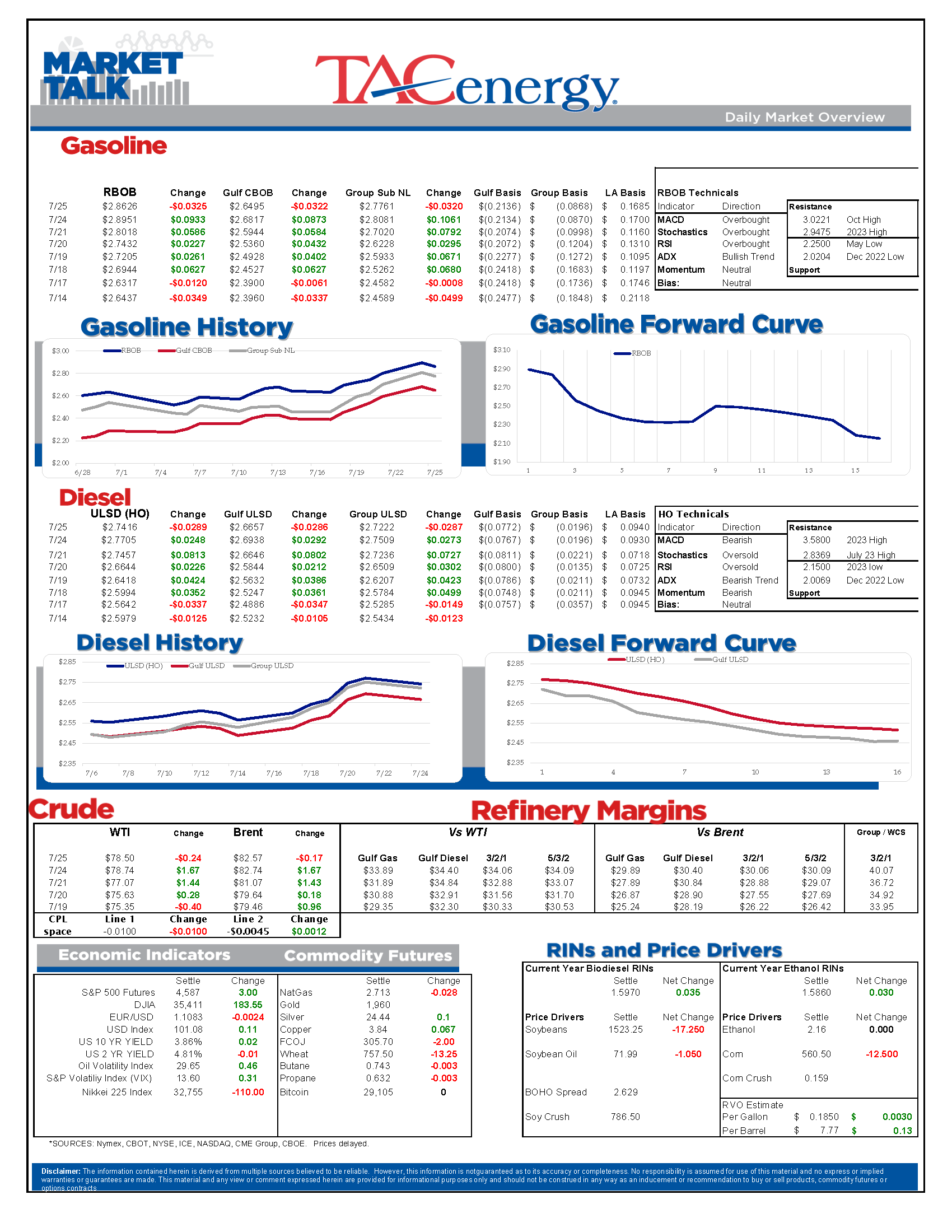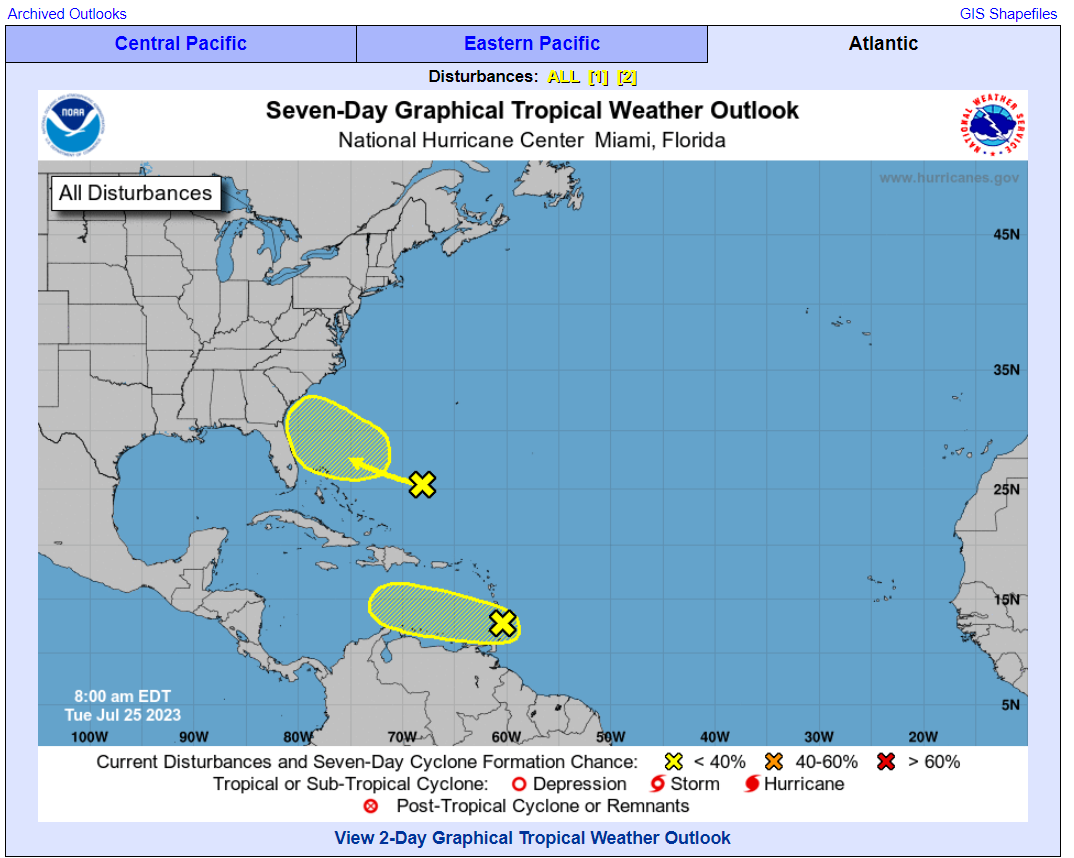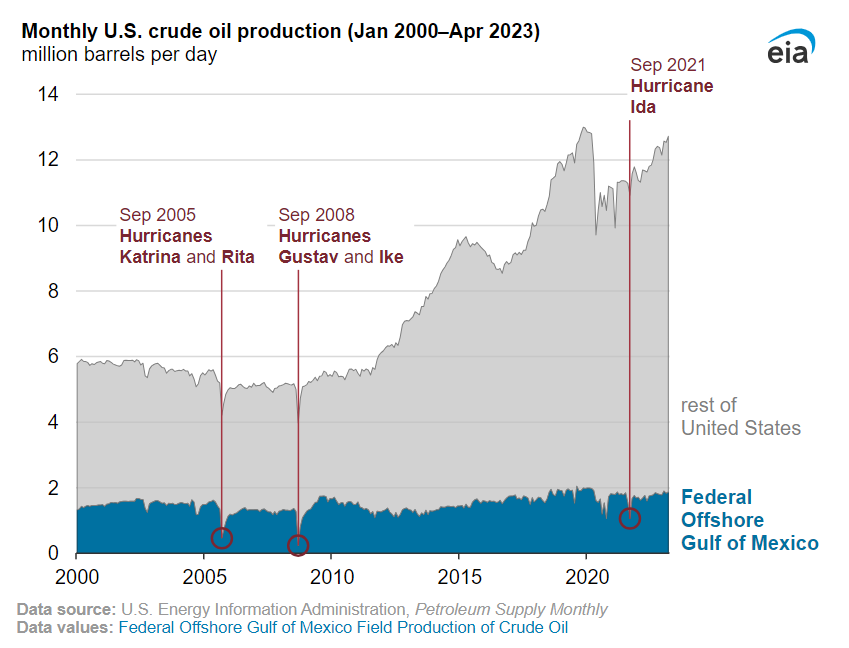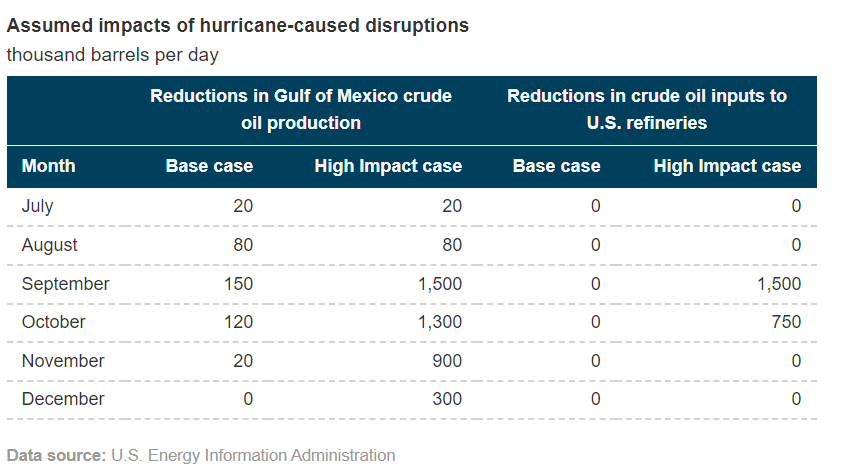Gasoline Futures Hit 9-Month Highs, WTI Eyes $80

Refinery upsets and optimistic equity markets sent gasoline prices soaring Monday, while ULSD and WTI had a much more tempered outlook. RBOB gasoline futures surged by more than 12 cents to touch a new 9 month high before giving back more than half of those gains since topping out early yesterday afternoon. While WTI was left in gasoline’s wake yesterday, it did manage to settle above its 200 day moving average which leaves the door open to a push north of $80 in the near term.
A reported FCC shutdown at Exxon Baton Rouge set to last weeks, which could erase more than a million barrels of gasoline output, took much of the credit for gasoline prices far outpacing the rest of the complex Monday. In addition, Marathon’s Texas City (aka Galveston Bay) facility had yet another upset over the weekend, marking at least a half dozen events since a fatal fire 2 months ago.
Despite the big moves in futures, physical traders seemed unimpressed with USGC basis values little changed on the day. West Coast basis values on the other hand rallied after the roll to August pipeline cycles, pushing cash gasoline prices up by more than 16 cents on the day following yet another reported upset at an LA-area refinery.
The EIA published its annual refinery capacity report Friday, noting the first increase in US refining capability since 2019, even though the report still does not include Exxon’s 250mb/day expansion in Beaumont or smaller additions from Valero Pt Arthur or Marathon Galveston Bay that occurred this year. The increase in the past year was all due to PBF Paulsboro bringing shuttered units back online in 2022 as East Coast refiners went from worst to first due to the fallout from the Russian invasion of Ukraine. Good news for those who don’t enjoy reading, the EIA is now publishing these notes on YouTube, despite the ongoing writers’ strike.
After the Atlantic’s first hurricane of the season came and went over open water this past week, the NHC is tracking 2 more potential storm systems. One is targeting the east coast of Florida, Georgia and South Carolina while the other makes its way into Caribbean, but both are given just 20% odds of developing over the next 7 days.
An EIA note last week took a closer look at the impact on tropical systems on Gulf Coast oil production and refining, forecasting a peak impact of a storm shutting in 80% of GOM oil output, and taking 8% of the country’s refining output offline for a month. This Reuters note details how refinery issues not caused by hurricanes have kept diesel inventories across the US low (outside of the West Coast where Renewable Diesel inventories don’t show up in official numbers yet) and making the system more susceptible to a price shock should a storm hit.
Pretty much everyone Is betting the FED will raise their target interest rate by 25 points tomorrow, with the CME’s Fedwatch tool showing a 99% probability of that outcome, while 1% thinks the FED may raise by 50 points. It’s worth noting that a month ago 28% of bets were placed on the FED holding rates steady at this meeting, and yet equities have rallied in the face of tighter monetary policy, in another sign of shifting expectations from economists that tend to predict 5 out of every 2 recessions.
Click here to download a PDF of today's TACenergy Market Talk.
News & Views
View All
The Recovery Rally In Energy Markets Continues For A 3rd Day
The recovery rally in energy markets continues for a 3rd day with refined product futures both up more than a dime off of the multi-month lows we saw Wednesday morning. The DJIA broke 40,000 for the first time ever Thursday, and while it pulled back yesterday, US equity futures are suggesting the market will open north of that mark this morning, adding to the sends of optimism in the market.
Despite the bounce in the back half of the week, the weekly charts for both RBOB and ULSD are still painting a bearish outlook with a lower high and lower low set this week unless the early rally this morning can pick up steam in the afternoon. It does seem like the cycle of liquidation from hedge funds has ended however, so it would appear to be less likely that we’ll see another test of technical support near term after this bounce.
Ukraine hit another Russian refinery with a drone strike overnight, sparking a fire at Rosneft’s 240mb/day Tuapse facility on the black sea. That plant was one of the first to be struck by Ukrainian drones back in January and had just completed repairs from that strike in April. The attack was just one part of the largest drone attack to date on Russian energy infrastructure overnight, with more than 100 drones targeting power plants, fuel terminals and two different ports on the Black Sea. I guess that means Ukraine continues to politely ignore the White House request to stop blowing up energy infrastructure in Russia.
Elsewhere in the world where lots of things are being blown up: Several reports of a drone attack in Israel’s largest refining complex (just under 200kbd) made the rounds Thursday, although it remains unclear how much of that is propaganda by the attackers and if any impact was made on production.
The LA market had 2 different refinery upsets Thursday. Marathon reported an upset at the Carson section of its Los Angeles refinery in the morning (the Carson facility was combined with the Wilmington refinery in 2019 and now reports as a single unit to the state, but separately to the AQMD) and Chevron noted a “planned” flaring event Thursday afternoon. Diesel basis values in the region jumped 6 cents during the day. Chicago diesel basis also staged a recovery rally after differentials dropped past a 30 cent discount to futures earlier in the week, pushing wholesale values briefly below $2.10/gallon.
So far there haven’t been any reports of refinery disruptions from the severe weather than swept across the Houston area Thursday. Valero did report a weather-related upset at its Mckee refinery in the TX panhandle, although it appears they avoided having to take any units offline due to that event.
The Panama Canal Authority announced it was increasing its daily ship transit level to 31 from 24 as water levels in the region have recovered following more than a year of restrictions. That’s still lower than the 39 ships/day rate at the peak in 2021, but far better than the low of 18 ships per day that choked transit last year.
Click here to download a PDF of today's TACenergy Market Talk.

Energy Prices Found A Temporary Floor After Hitting New Multi-Month Lows Wednesday
Energy prices found a temporary floor after hitting new multi-month lows Wednesday morning as a rally to record highs in US equity markets and a modestly bullish DOE report both seemed to encourage buyers to step back into the ring.
RBOB and ULSD futures both bounced more than 6 cents off of their morning lows, following a CPI report that eased inflation fears and boosted hopes for the stock market’s obsession of the FED cutting interest rates. Even though the correlation between energy prices and equities and currencies has been weak lately, the spillover effect on the bidding was clear from the timing of the moves Wednesday.
The DOE’s weekly report seemed to add to the optimism seen in equity markets as healthy increases in the government’s demand estimates kept product inventories from building despite increased refinery runs.
PADD 3 diesel stocks dropped after large increases in each of the past 3 weeks pushed inventories from the low end of their seasonal range to average levels. PADD 2 inventories remain well above average which helps explain the slump in mid-continent basis values over the past week. Diesel demand showed a nice recovery on the week and would actually be above the 5 year average if the 5% or so of US consumption that’s transitioned to RD was included in these figures.
Gasoline inventories are following typical seasonal patterns except on the West Coast where a surge in imports helped inventories recover for a 3rd straight week following April’s big basis rally.
Refiners for the most part are also following the seasonal script, ramping up output as we approach the peak driving demand season which unofficially kicks off in 10 days. PADD 2 refiners didn’t seem to be learning any lessons from last year’s basis collapse and rapidly increased run rates last week, which is another contributor to the weakness in midwestern cash markets. One difference this year for PADD 2 refiners is the new Transmountain pipeline system has eroded some of their buying advantage for Canadian crude grades, although those spreads so far haven’t shrunk as much as some had feared.
Meanwhile, wildfires are threatening Canada’s largest oil sands hub Ft. McMurray Alberta, and more than 6,000 people have been forced to evacuate the area. So far no production disruptions have been reported, but you may recall that fires in this region shut in more than 1 million barrels/day of production in 2016, which helped oil prices recover from their slump below $30/barrel.
California’s Air Resources Board announced it was indefinitely delaying its latest California Carbon Allowance (CCA) auction – in the middle of the auction - due to technical difficulties, with no word yet from the agency when bidders’ security payments will be returned, which is pretty much a nice microcosm for the entire Cap & Trade program those credits enable.






